How to Cut a Half of Beef Brazillion Style
With an endless parade of grilled meats all carved table-side, Brazilian barbecue is a must-try for any meat-eater. Brazilian barbecue is unlike smoked American barbecue or Korean barbecue that's cooked by the diner, it actually features large chunks of slow-cooked meat presented table-side on sword-like metal skewers.
Known as churrascaria in Brazil, these restaurants are a meat marathon and guaranteed to scratch the itch of any carnivore.
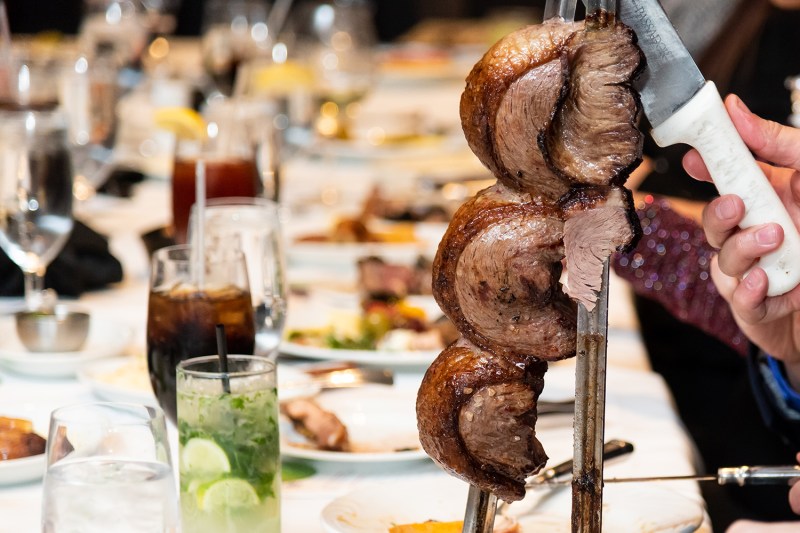
Related Guides
- Guide to Brazilian Sparkling Wine
- Best Barbecue Cookbooks
History
Cattle ranching first appeared in Brazil 400 years ago in the southern Rio Grande do Sul region. These cattle ranchers, called gauchos, created a unique form of barbecue — meat was cooked slowly over wood and seasoned simply with salt. Barbecue culture spread in the 1940s as individuals from Rio Grande do Sul started to open barbecue restaurants throughout Brazil.
Traditionally, Brazilian barbecue meat is cooked slowly over wood embers. However, most modern Brazilian barbecue restaurants, the all-you-can-eat steakhouses, will cook their meat on racks in specially designed metal rotisserie grills. The fattier cuts are usually placed on top, allowing the fat to baste the meats placed below.
The Salt, Sal Grosso
Despite the variety of meats, most Brazilian barbecue is flavored simply with salt. Of course, this isn't table salt — it's sal grosso, a coarse rock salt. The texture and flavor of sal grosso accentuates the natural flavor of meat, although the crunchy texture might be strange to the American palate.
There are different schools of thought regarding the timing of the seasoning. Some Brazilian barbecue chefs prefer to salt right before grilling. Others believe the best time is after the meat has been cooked briefly. Some chefs even use a salt-water baste, insisting that this method keeps the meat moist during grilling.
The use of only salt is deliberate — churrascaria is all about maintaining the pure flavor of the meat. However, Brazilian barbecue is more than just beef. Poultry, lamb, and pork also are common and these meats are often spiced and marinaded.
El Che Steakhouse Chimichurri
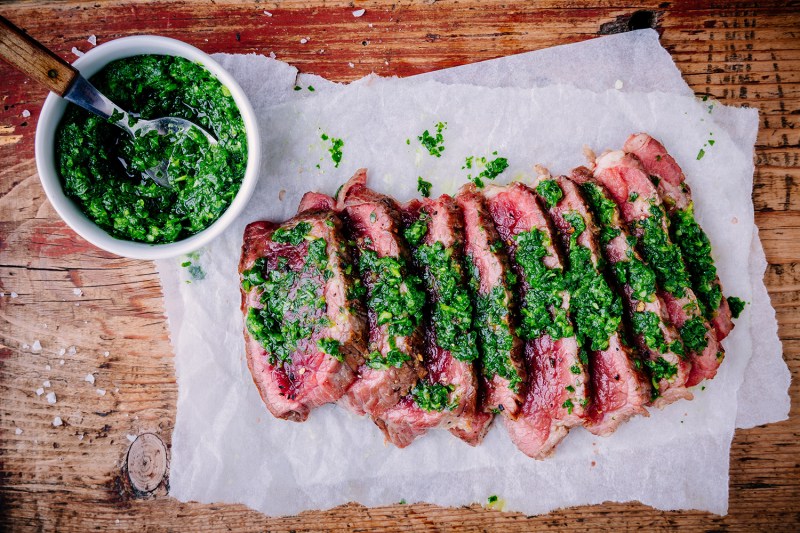
(By Chef John Manion of El Che Steakhouse & Bar)
Inspired by his childhood in Sao Paulo, Brazil, Chef John Manion's El Che Steakhouse specializes in wood-fired Latin American barbecue, earning a three-star rating from the Chicago Tribune. Because of the pandemic, Chef Manion has opened a retail concept called El Che Meat & Provisions, an online meat market specializing in premium beef and local products. Chef Manion also has penned a zine called Meat Project with a local writer and friend, highlighting the art of backyard grilling.
Originally from Argentina and Uruguay, chimichurri is also popular with Brazilian barbecue. Although great with beef, this recipe can also be eaten with any kind of barbecued meat.
Ingredients:
- 3 cups flat-leaf parsley leaves (from about 3 bunches), very finely chopped (no stems)
- 6 garlic cloves, very finely chopped
- 1 ½ teaspoon finely chopped fresh oregano leaves
- ¼ cup distilled white vinegar
- 1 teaspoon kosher salt
- 1 teaspoon freshly ground black pepper
- ¾ teaspoon dried red pepper flakes
- 1 bay leaf
- ¾ cup extra-virgin olive oil
Method:
- In a medium-size airtight food container, stir together the parsley, garlic, oregano, vinegar, salt, black pepper, bay leaf, and red pepper flakes. Stir in the olive oil, cover, and refrigerate the chimichurri sauce overnight.
- If pressed for time, throw everything in a food processor and pulse it a few times instead of hand chopping.
- Particularly excellent served with a grilled hangar steak.
The Meat
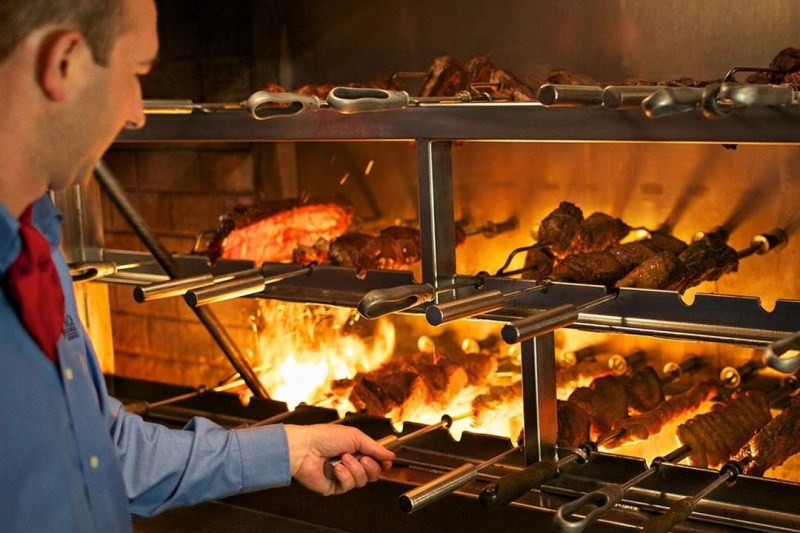
The joy of Brazilian barbecue is centered around the endless variety of meat. But this endless quantity can also be intimidating. Although many cuts of beef, such as ribeye and filet mignon, will be familiar to American diners, Brazilian barbecue will features cuts unique to churrascaria. The following cuts are considered the must-eats of any Brazilian barbecue experience.
Picanha
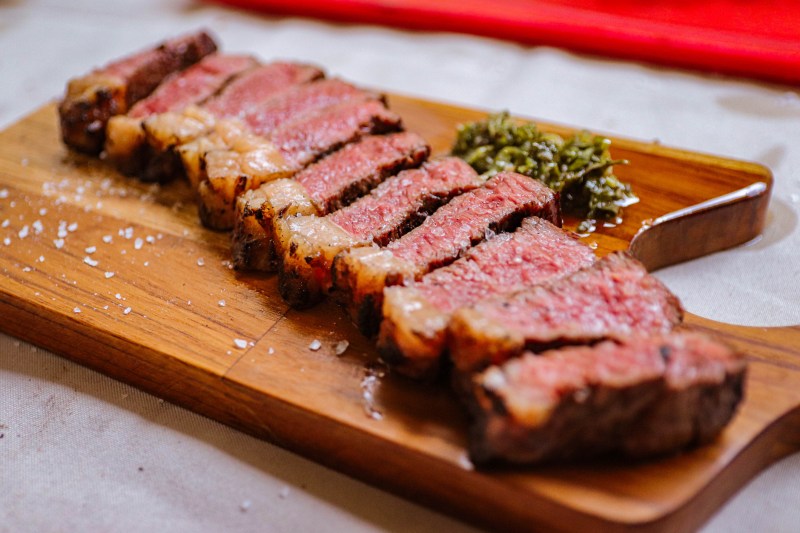
By far the most popular cut in Brazilian barbecue, picanha is an excellent combination of meat and fat. Also called sirloin cap or culotte, the picanha is cut from the cow's rump and considered the premium cut on the sirloin.
The unique part of picanha is that it is butchered with the fat cap still attached. This is essential as the fat gets crispy and savory when grilled. The fat of picanha is unique because there is no tendon or gristle between the meat and fat cap. This gives the cut a pleasing mouthfeel without any unpleasant gristle. The iconic image of Brazilian barbecue, picanha is grilled folded into a "C" shape on the metal skewer and best served sliced thin.
According to Chef Manion, picanha should be cut into 2-inch thick steak cuts and cooked slowly until medium-rare. The slow cooking allows the fat cap to render and baste the beef. When the internal temperature is 122 degrees Fahrenheit, rest the picanha before slicing it across the grain.
Baby Beef (Pronounced "Bebe Beefey")
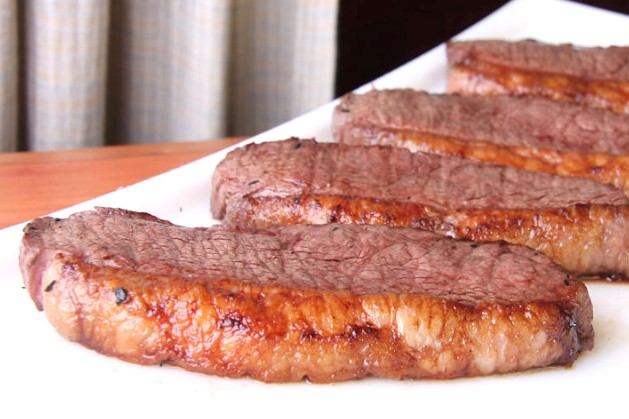
Baby beef is the second most popular cut in Brazil and the most expensive. A prized delicacy, baby beef is sourced from the tenderloin of young cows (not veal cows, which are younger). Baby beef is more tender and lean than regular beef, all aspects prized by Brazilians. The Brazilian palate prefers leaner meat without the predominance of marbling prized by American beef grading or Japanese Wagyu.
Filet Mignon
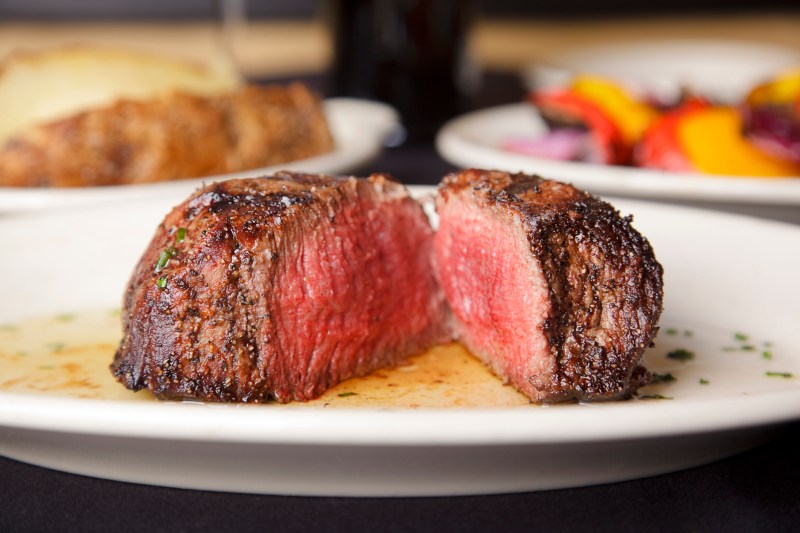
Because of the Brazilian preference for lean cuts, the filet mignon is a popular choice for barbecue. The filet is also frequently accentuated with different flavors, appearing with a Parmesan crust or wrapped in bacon. Also, since Brazilian barbecue features multiple cuts, diners are free to mix leaner cuts like filet with fattier cuts such as ribeye for different flavor combinations.
Lombo (Pork Loin)
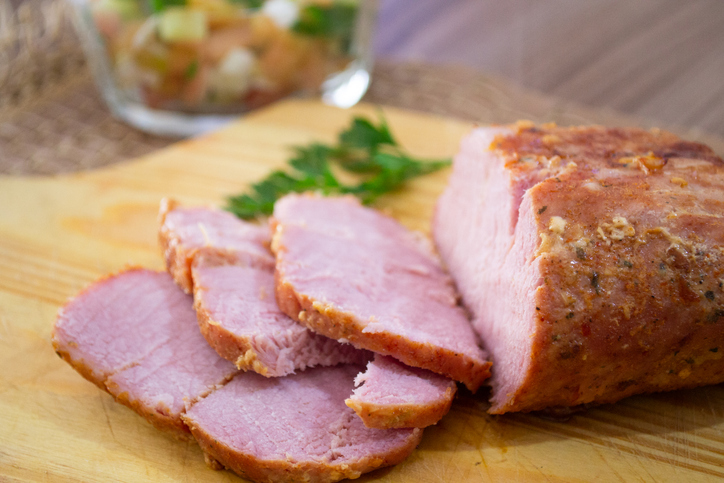
Besides beef, pork also is common. A popular item is pork loin sliced thin and seasoned with sal grosso. Besides the standard salt seasoning, pork loin can also be grilled with spices or a Parmesan crust.
Sides

Most Brazilian barbecue restaurants are all-you-can-eat buffets featuring a plethora of side dishes and salads. These side dishes include rice and beans, french fries, sweet plantains, and fried polenta cakes. A popular side dish is pão de queijo, a puffy cheese bread with a spongy texture due to tapioca flour.
There are two essential accompaniments to Brazilian barbecue — molho campanha and farofa. Molho campanha, which resembles Mexican pico de gallo, is a vinaigrette sauce made from red and green peppers, onions, tomatoes, and vinegar. The acidity of the sauce is a great compliment to the richness of meat. Farofa is a powder of toasted yucca flour,adding texture to meat and other dishes.
Editors' Recommendations
- The 5 Best Grilled Chicken Salad Recipes for the Summer
- Kim Kardashian Now Beyond Meat's Chief Taste Consultant
- 9 Best Air Fryers With Rotisserie of 2022
- The 9 Best Summer Squashes to Cook With This Summer
- Try These 13 Simple Picnic Food Ideas
Source: https://www.themanual.com/food-and-drink/brazilian-barbecue-guide/
0 Response to "How to Cut a Half of Beef Brazillion Style"
Post a Comment